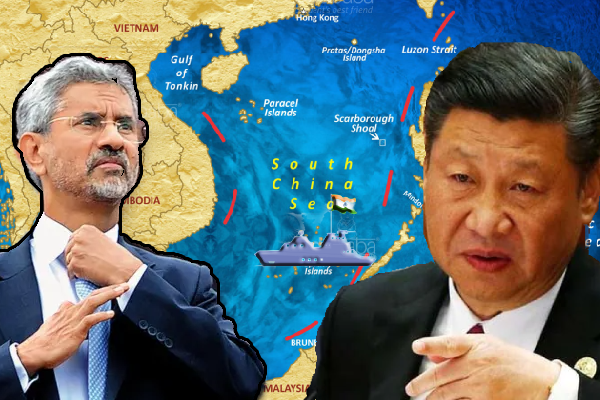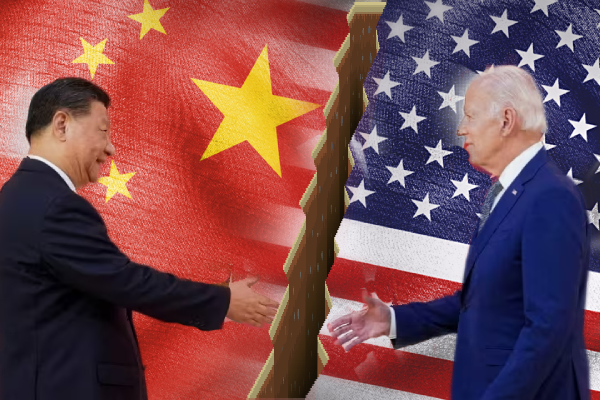The South China Sea has been prominent in recent news for various reasons, with one of the primary factors being its contentious activities affecting other countries in the region, particularly the Philippines.
Additionally, the recent visit of Indian Foreign Minister S Jaishankar to the Philippines has drawn attention. Jaishankar made bold statements condemning Chinese aggressive actions in the South China Sea, signalling a notable shift in India’s approach toward China, particularly following the Galwan Valley crisis.
In this blog post, we will explore the disputes in the South China Sea, analyse the visit of S Jaishankar to the Philippines and examine the increasing influence of the India-US partnership in the region.
Visit of S.jaishankar to the philippines
In March 2023, External Affairs Minister, S Jaishankar went on a five-day visit to Singapore, Malaysia and the Philippines. His visit made headlines when he reiterated India’s support to the Philippines in the South China Sea. Jaishankar said, “I take this opportunity to firmly reiterate India’s support to the Philippines for upholding its national security.” He further added, “Two countries whose trust and comfort is growing so rapidly that we look at various new areas of cooperation and certainly in defence and security.
These statements by S Jaishankar came after China referred to Arunachal Pradesh as an inherent part of China’s territory. India refuted China’s absurd statement and said Arunachal Pradesh, “was, is and will always remain an integral and inalienable part of Bharat.”
Beijing in response said, “Any third party is not in a position to interfere in maritime disputes.” It also wrote in its mouthpiece Global Times, “If Jaishankar wants to support the Philippines in provoking China in the South China Sea, it could be seen as a highly competitive, even provocative and hostile stance.”
India has shifted its focus to the South China Sea to counterbalance China’s increasing influence in the Indian Ocean and its territorial claims along the Sino-Indo border.
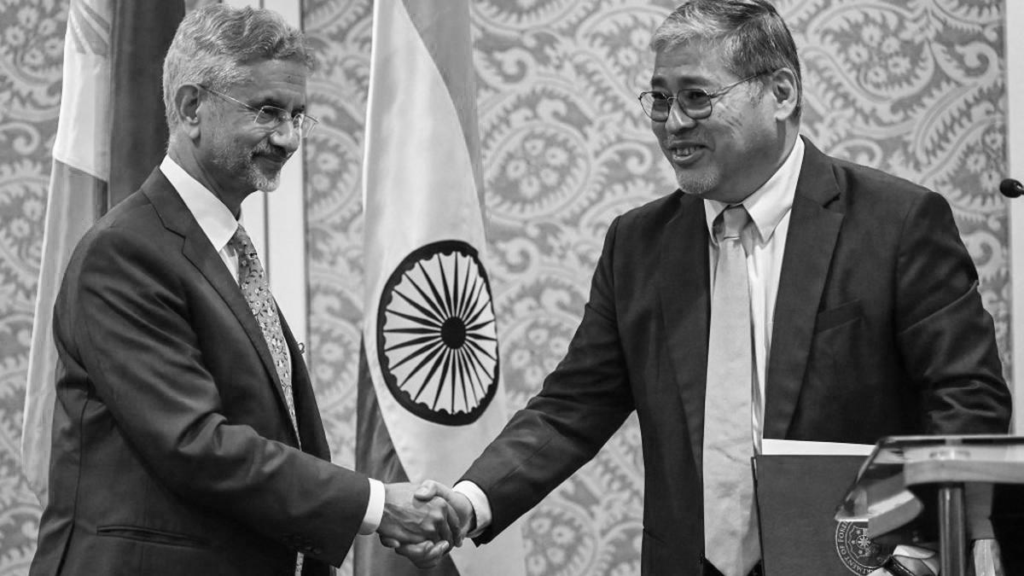
disputes in the south china sea
In 1947, China published its nine-dash lines also known as U-shaped lines or cow’s tongue. These lines encompass a large area of the South China Sea violating the rights of other countries in the region as depicted in the image below.
Vietnam vehemently disputes China’s historical assertions, contending that China did not lay claim to the islands before the 1940s. Vietnam asserts its active governance over both the Paracels and the Spratlys since the 17th Century, supported by documented evidence.
The Philippines, another significant claimant, bases its claim on a portion of the Spratly Islands primarily on its geographical proximity.
Furthermore, both the Philippines and China lay claim to the Scarborough Shoal, referred to as Huangyan Island in China located approximately 100 miles (160km) from the Philippines and 500 miles from China.
Malaysia and Brunei assert ownership over portions of the South China Sea, contending that these regions are encompassed by their economic exclusion zones delineated in accordance with the United Nations Convention on the Law of the Sea (UNCLOS).
While Brunei does not assert ownership over any of the disputed islands, Malaysia claims sovereignty over a few islands in the Spratlys.
China in the United Nations defended its illegal activities by saying. “China has indisputable sovereignty over the Islands in the region and the adjacent waters, as well as seabed and sub-soil thereof.”
But in 2016, the UN Law of the Sea Convention Tribunal ruled unanimously that China’s claim had no basis in international law.” The ruling was explicit and immediately rejected by China.
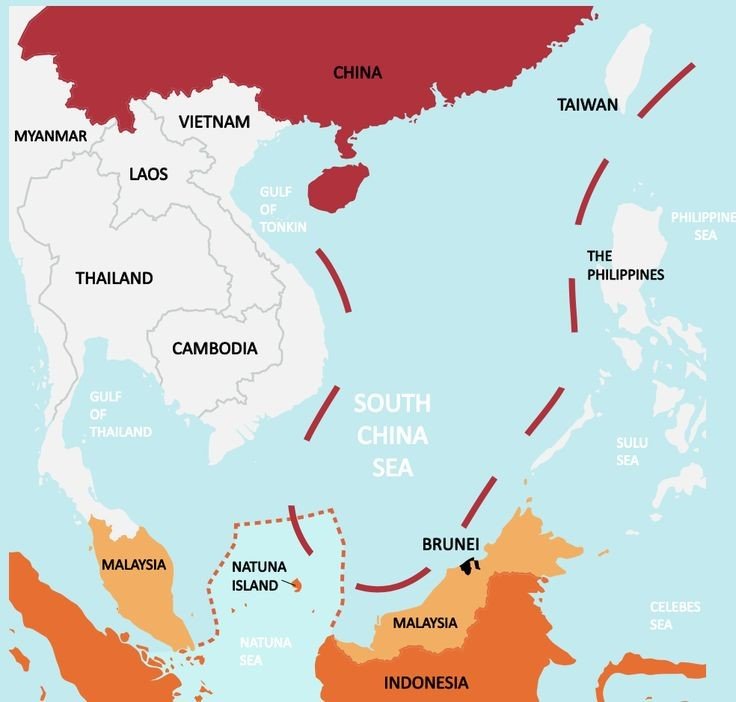
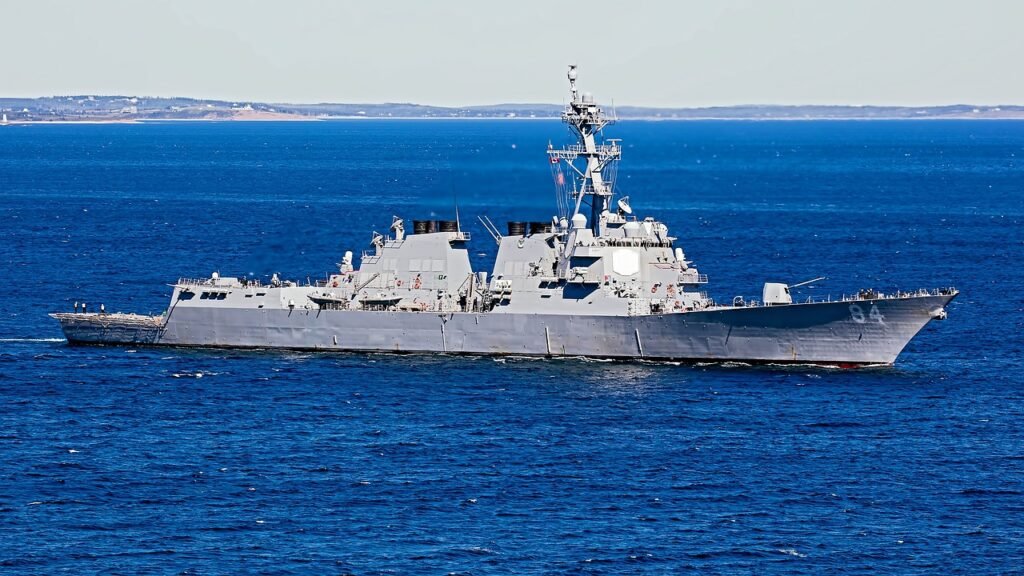
“For whosoever commands the sea commands the trade; whosoever commands the trade of the world commands the riches of the world, and consequently the world itself.”
-Sir Walter Raleigh
Why china is so desperate for the south china sea?
There are many reasons for China being so desperate in the South China Sea.
- Trade:
Approximately $3.37 trillion worth of trade passes through the South China Sea annually. Roughly 80% of China’s oil imports and 30% of global maritime trade transit through the South China Sea.
It is estimated that over 50% of the world’s supertanker traffic passes through the Malacca Strait, which connects the South China Sea to the Indian Ocean.
- Oil and Natural Gas Reserves:
Estimated oil reserves in the South China Sea vary widely, but they are believed to be significant. However, there is disagreement among experts and governments about the exact quantity of recoverable reserves.
According to the U.S. Energy Information Administration (EIA), it is estimated that the South China Sea holds around 11 billion barrels of confirmed oil reserves and roughly 190 trillion cubic feet of confirmed natural gas reserves.
China claims that the South China Sea holds around 130 billion barrels of oil and 900 trillion cubic feet of natural gas in undiscovered resources, but these claims are disputed by other countries in the region.
- Fish Stocks:
The South China Sea is one of the world’s most productive fishing grounds, supporting diverse marine ecosystems and a wide variety of fish species.
The region’s fish stocks include commercially important species such as tuna, mackerel, shrimp, crab, squid, and various reef fishes.
India-US Partnership in the South China Sea
New Delhi and Washington are pillars of QUAD, which aims to contain China’s rise in the Indo-Pacific. Cooperation between India and the USA is mutually beneficial for both countries. Biden had already said, “India-US partnership is most consequential in the World.”
India perceives the South China Sea as a foothold to push forward PM Modi’s ‘Act East Policy’ and offset China’s growing influence in the Indian Ocean and its offensive along the Sino-Indian Border. As earlier mentioned in the blog China referred to Arunachal Pradesh as its territory and also gave Chinese names to dozens of places in Arunachal Pradesh. US in this case extended support to India and said Arunachal Pradesh as Indian territory and opposes unilateral attempts by China.
In May 2019, the Indian Navy, for the first time conducted joint exercises with the US, Japanese and Philippines navies in the South China Sea. Vietnam received a fully operational light missile frigate from India in June 2023, marking a significant step in bilateral defence cooperation. India also struck a deal with the Philippines for the export of 100 BrahMos supersonic anti-ship missiles in June 2022. So, India’s engagement with the countries in the South China Sea has increased after the Galwan Valley crisis of May 2020 and China’s growing influence in the Indian Ocean, China is getting a taste of its own medicine in the South China Sea.
After a recent clash between the Philippines and China in the region, the US Department of State wrote in its press release dated 5 March 2024, “The US reaffirms the Article IV of the 1951 US-Philippines Mutual Defence Treaty extends to armed attacks on Philippines armed forces, public vessels or aircraft including those of its Coast guard anywhere in the South China Sea.”
In 2023, the Philippines gave the US access to four new military bases aimed at combating China. These new locations will strengthen the interoperability of the armed forces of the two countries.
The chances of major conflict in the South China Sea are very high given the involvement of multiple actors in the region and thanks to China’s growing contemptuous activities towards other countries in the region.
